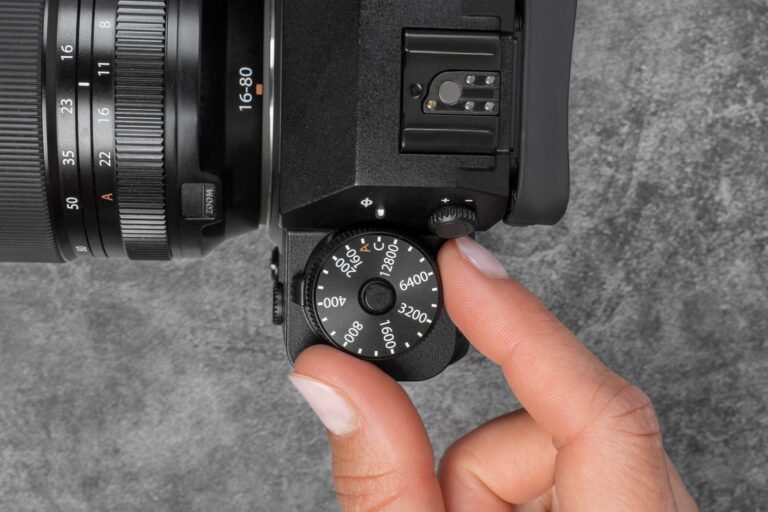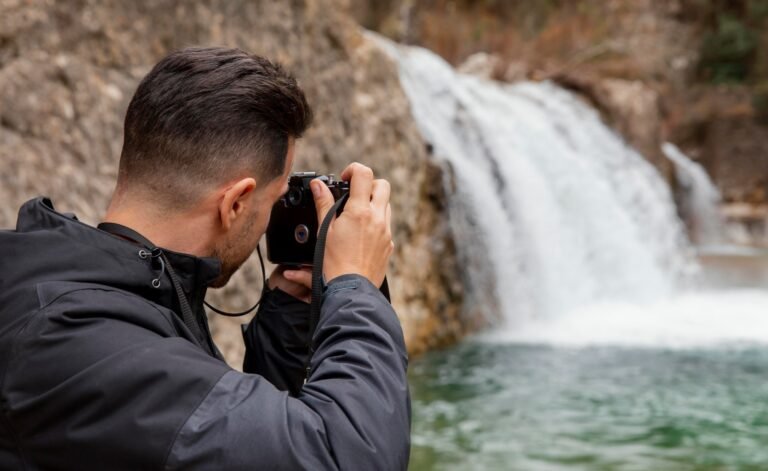
The basic steps for visual creativity
Learning the art of photography as a beginner involves understanding both technical aspects and creative principles to capture compelling and expressive images. Here are the basic steps to help you start your journey towards visual creativity in photography:
- Get to Know Your Camera
– Types of Cameras: Understand the basic functions of your camera, whether it’s a DSLR, mirrorless, or a smartphone camera.
– Camera Settings: Learn about basic settings such as aperture, shutter speed, ISO, focus modes, and white balance.
– Practice Handling: Familiarize yourself with holding the camera steady and adjusting settings without looking, to capture spontaneous moments effectively.
- Master the Exposure Triangle
– Aperture: Understand how aperture affects depth of field (DOF) and the amount of light entering the lens.
– Shutter Speed: Learn how shutter speed controls motion blur and how long light is exposed to the sensor.
– ISO: Discover how ISO sensitivity affects exposure and the trade-offs between high and low ISO settings in terms of noise.
- Understand Composition Principles
– Rule of Thirds: Divide your frame into thirds both horizontally and vertically, placing key elements along these lines or at their intersections.
– Leading Lines: Use natural or man-made lines within the scene to lead the viewer’s eye towards the main subject.
– Symmetry and Patterns: Seek out symmetry or patterns in your subjects or surroundings to create visually pleasing compositions.
– Foreground and Background: Consider elements in the foreground and background to add depth and context to your photos.
- Use of Light
– Natural Light: Learn to observe and utilize different qualities of natural light, such as soft light during golden hour or directional light for dramatic effects.
– Artificial Light: Experiment with using flash or continuous lighting to control and enhance lighting conditions, especially in low-light environments.
- Experiment with Perspectives and Angles
– Point of View: Explore different angles and heights to capture unique perspectives of your subject.
– Depth and Scale: Experiment with varying distances from your subject to emphasize depth and scale within your composition.
- Practice Visualization and Pre-visualization
– Visualization: Before taking a shot, visualize how you want the final image to look, considering composition, light, and mood.
– Pre-visualization: Think about how you could post-process the image to achieve your desired look, whether enhancing colors, adjusting contrast, or cropping.
- Post-Processing Basics
– Editing Software: Familiarize yourself with basic editing tools in software like Adobe Lightroom or similar programs.
– Crop and Straighten: Make necessary adjustments to composition, cropping out distractions and straightening horizons.
– Color and Tone Adjustments: Experiment with adjusting colors, tones, contrast, and exposure to enhance the visual impact of your photos.
- Learn from Others and Seek Feedback
– Study Photography: Look at the work of renowned photographers to understand different styles, techniques, and genres.
– Join Communities: Participate in photography forums, workshops, or local meetups to learn from others and receive constructive feedback on your work.
- Practice, Experiment, and Iterate
– Consistent Practice: The more you practice, the more familiar you’ll become with your equipment and the technical aspects of photography.
– Experimentation: Don’t be afraid to try new techniques, perspectives, and settings to develop your own style and creative vision.
– Review and Learn: Critique your own work and learn from both successes and mistakes to continuously improve your photography skills.
- Patience and Persistence
– Enjoy the Process: Photography is a journey of learning and discovery. Enjoy the moments of experimentation and growth as you develop your skills.
– Persistence: Keep pushing yourself to explore new subjects, techniques, and challenges to evolve as a photographer.
By following these basic steps and continuously honing your skills through practice and exploration, you’ll gradually develop your eye for visual creativity and storytelling through photography. Remember, the key is to have fun, stay curious, and let your passion drive your journey in the art of photography.






